For years, I’ve been trying to entice myself to get through CS50, an intro-intro-intro-intro-to-Computer-Science course through Harvard University, but just when I get all excited about starting to settle in, something happens in my life and I need to shift my focus.
So lately, one of the things I’ve been doing is finding smaller projects with which I can gain some skill and learn how I can make something relevant to what I want to do. And what do I want to do? Despite my seemingly wandering career and educational paths, making music is one of the core pillars of my life.
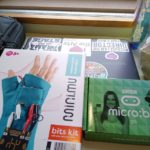
While doing some research on makerspaces for the TLC at Bailey Library at SRU, I came across the website Adafruit. I’ll be the first to admit that I have no idea what to do with most of the things you’d find on there, but something did catch my eye – the Mini.Mu.
The Mini.Mu is a beginner-friendly iteration of the MiMu gloves, brainchild of performing artist Imogen Heap, who is known for innovation on stage. Her gloves are quite pricey, but have a lot more features and capabilities, but thank goodness for Imogen and Helen Leigh, who have made the general idea much more accessible for those of us who are just starting out.
The Mini.Mu starts with a BBC Micro:bit, a palm-sized computer, completely programmable to do a ton of different things. The kit also comes with the Mini.Mu speaker, alligator clips, wires, and all the sewing accouterments to make your own glove. While it won’t have the flexibility and sensitivity that you might with the “real” thing, it does give a great introduction into how we can create music in new and interesting ways.
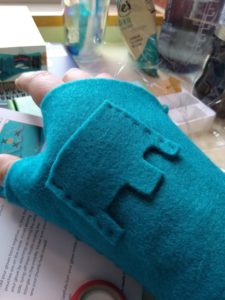
The first task was to create the glove. The materials provided, however, are probably less than ideal. The felt is probably fine, but we’re given polyester thread, which doesn’t grip the felt, and a needle that is entirely too large to make any headway with keeping stitches tight. The recommendations for kids is for adult help up to age 10, but as a person in my thirties not working with any children, even I had trouble keeping my cool while trying to sew the felt. My initial attempts looked okay, but were pretty functionally useless.
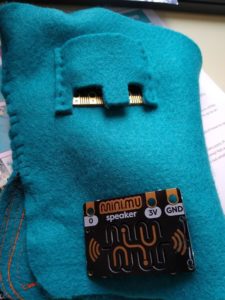
Once assembled, putting the glove together with the components of the Mini.Mu was pretty easy. The micro:bit goes in the pocket on the back of the hand, and the Mini.Mu speaker gets sewn on the bottom of the back of the glove. Attach the alligator clips between the micro:bit and the Mini.Mu speaker, connect the micro:bit to the battery pack which is inserted on the inside of the wrist of the glove, and voila! Everything is connected!
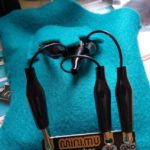
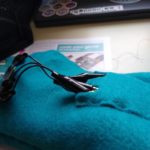
In theory, anyway.
0 Comments